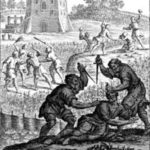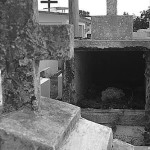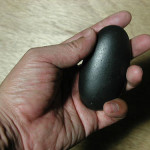We run our website the way we wished the whole internet worked: we provide high quality original content with no ads. We are funded solely by your direct support. Please consider supporting this project.

Cruciform Aikido Pt 3: The Judge Who Lets Them Have It
We ended our last post noting that in the cross God ingeniously turned evil back on itself and triumphed over it. But what does all this teach us about the nature of divine judgment? Two things.
First, as the one who bore our sin, Jesus experienced the judgment we deserved when the Father withdrew himself and allowed wicked humans and wicked angelic agents to put him to death. The essence of sin is pushing God away, and since God is the source of life, the natural consequence of sin is death (Rom. 6:23; Ja. 1:13-15). Hence, the cross teaches us that the Divine Judge judges by “letting them have it”—that is, what they want. They want to be free from God, so God—with a grieving heart (Lk 19:41)—allows them to be free from him. He thus withdraws his protective presence thereby allowing them to experience the death-consequences of their choices. This is what the Father did with the innocent one who bore the sin of the world, and since this is the quintessential revelation of divine judgment, we should conclude that this is what he reluctantly does with all who persist in pushing him away.
Second, as we noted above, by delivering the one who bore the sin of the world over to Satan and the fallen powers, God defeated these forces of evil. The love that was manifested in this supremely loving sacrifice defeated the powers behind all hatred. The light and truth about God’s loving character that was manifested in this quintessential revelatory act ended the lie about God’s character that first infected human minds in the Garden (Gen. 3:1-5), and thus defeated the powers of darkness and deception. The manner in which Jesus’ death reconciled us to God, removing the sin that gave Satan rights over us (Col. 2:14-16), left the entire realm of darkness powerless against us.
In this light, it’s clear that the crucifixion—which Satan and the fallen powers helped to orchestrate—backfired on this entire realm of darkness, bringing about their demise. So it is that Paul declares that if the fallen cosmic rulers of this world had “understood the wisdom of God, they would not have crucified the Lord of glory” (1 Cor. 2:8). And since the cross is the quintessential revelation of the true nature of God’s judgment, it becomes apparent that God judges evil by allowing it to run its course and to ultimately self-implode.
Image by Duane Schoon. Used in accordance with Creative Commons. Sourced via Flickr.
Cruciform Aikido Series
Category: General
Tags: Cruciform Theology, Judgement
Related Reading

Sermons: The Church – Week Five
In week five of this sermon series, Greg Boyd discusses what the church should look like in the lens of the cross. A universal Church was born out of the ministry of Jesus, and this Church is empowered to look like the Cross. In this sermon, Greg shows us why it’s so important, as the…

The Violent Vineyard Owner: A Response to Paul Copan (#8)
In my previous post I addressed two of the three parables that Paul Copan argues present God in violent ways. Today I will address the third, which is the parable of a vineyard owner with hostile tenants (Matthew 21:33-41; Luke 20:9-13). This parable differs from the previous two parables. Whereas the previous parables deal with…

God’s Moral Immutability
Classical theologians from the fourth and fifth centuries on were very concerned with protecting their understanding of the metaphysical attributes of God—like timelessness, immutability, impassibility—by assessing biblical portraits that conflicted with these attributes to be accommodations. However, once we resolve that all our thinking about God must be anchored in the cross, our primary concern…

Rethinking the Resurrection
As much as every other aspect of Jesus life and ministry, I submit that the resurrection must be understood in light of the cross. This event was not anything like the resuscitation of a random corpse. It was the resurrection of the Incarnate Son of God who had fulfilled the human side of the God-human…

The Problem with Christocentrism
As we’ve discussed in the previous posts, there has been a growing move toward a Christocentric orientation in theology since Barth, and especially over the last fifty years. I enthusiastically applaud this trend, for I’m persuaded it reflects the orientation of the NT itself, so far as it goes. The trouble is, it seems to…

When the Law Demanded the Death Penalty
The Sinai covenant is significantly structured around violence. It motivates behavioral conformity by promising rewards and threatening violence. Without the threat of violence, the law looses its “teeth.” If the law is an acquiescence to sin, then the divinely sanctioned violence that is associated with it must also be considered an acquiescence to sin. The…
